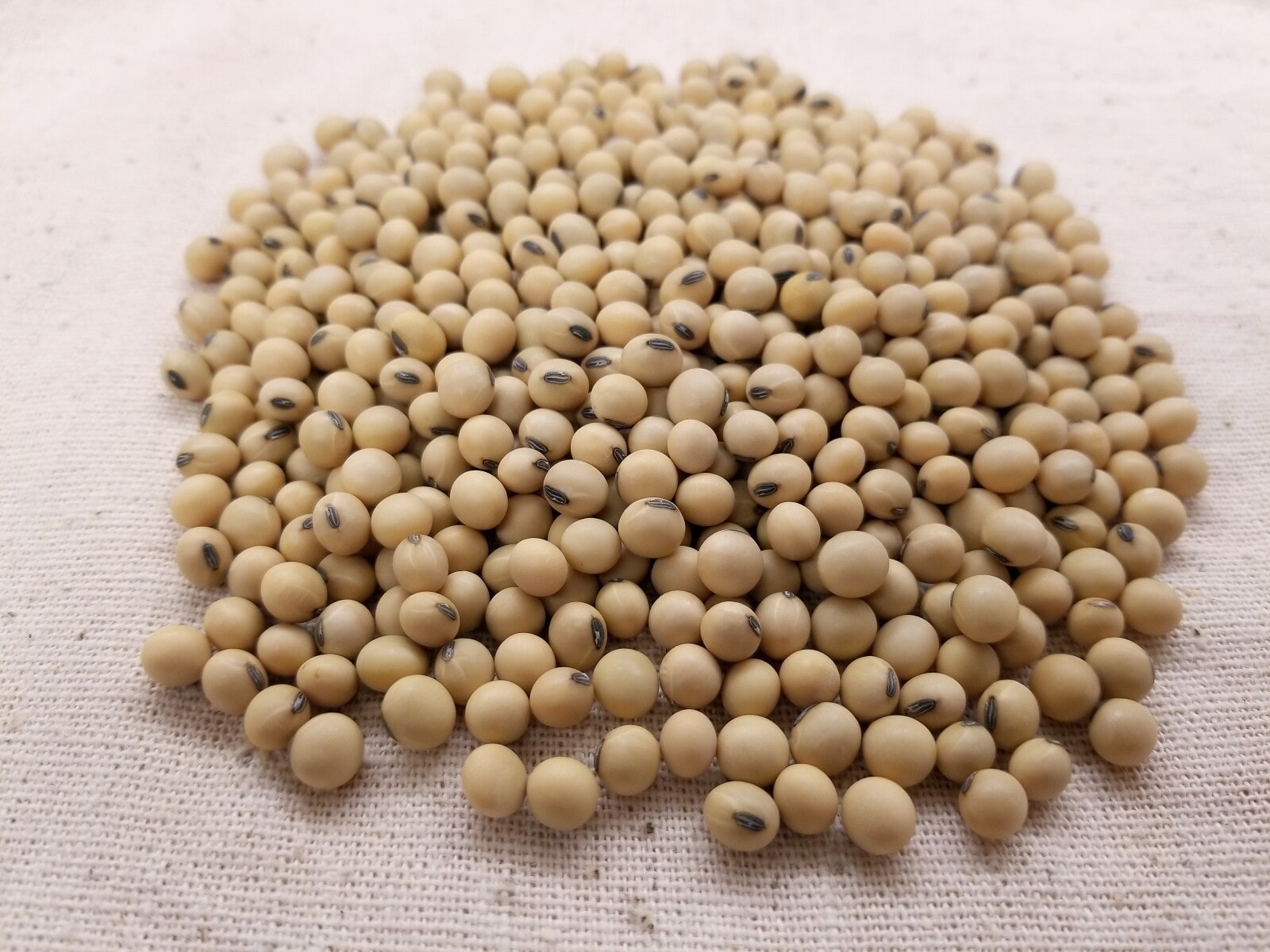nutrition
Is Soy Protein Bad For You?
On This Page

What’s the deal with soy protein? Is it good for me, bad for me, or somewhere in between? Get all the information you need right here.
What is soy?
Soy is a legume native to Asia with an edible bean that is an increasingly popular plant-based source of protein with limited sulfur containing amino acids such as methionine. Among the most well-known and popular soy products are tofu, soy milk, edamame, tempeh, soy sauce, and fermented bean paste. It is a reliable source of protein that also contains fiber, vitamins, and minerals, and is a fairly common food option for vegetarian and vegan eaters. Its textured vegetable protein (TVP) can be found in many meat and dairy food alternatives. Soy also has a high Protein Digestibility Corrected Amino Acid Score (PDCAAS), which is the preferred measurement of protein value in human nutrition.
Why is soy controversial?
Some sources of soy can be genetically modified and potentially have some phytoestrogenic properties. The general consensus is that soy, which has been eaten by humans for thousands of years, is healthy to consume on a regular basis. The overall goal with food is to try to get the highest quality possible.
Is soy nutritious?
Soy is a high-protein, nutrient-dense food source that has far less fat than most animal proteins. It comes in a variety of different forms and is a great protein source for vegetarians, vegans, and non-meat eaters.
Does soy food offer amino acids?
Soybeans contain all of the essential amino acids required for human nutrition and are, therefore, a complete protein.
Types of soy foods
Edamame are soybeans that were harvested while the beans are still green and sweet tasting. They are usually served as a snack after being boiled. Tofu is a smooth, soft product that has little flavor and usually absorbs the flavors of the other ingredients in the dish. There are two types of tofu: water-packed tofu, which is dense and usually best in stir fry and soup; and silken tofu, which works best in blends and purees. Soy sauce is a dark brown liquid made from soybeans that have undergone a fermenting process. It has little soy protein and is high in salt. Teriyaki sauce contains soy sauce as well as other ingredients. Miso is a rich, salty paste that is often used in Japanese cooking to make soup, sauces, and dressings. Soy nuts are roasted whole soybeans that have been baked until browned. They are high in protein and isoflavones, and similar in both texture and flavor to peanuts. Tempeh is whole soybeans mixed with another grain, fermented then pressed into a cake or bar.
What is soy protein?
Soy protein is a protein that is naturally found in soybeans. It is isolated from the soybean through a series of treatments, including dehulling, flaking, and defatting, then processed into three high-protein commercial products: soy flour, concentrates, and isolates. Two out of four protein groups are found in soy protein: albumins, (which are water-soluble), and globulins (which are salt soluble). The primary protein type in the soybean is globulin.
What is soy protein isolate?
Soy protein isolate (SPI) is the most refined form of soy protein. It has a protein content greater than 90% and an improved digestibility. SPI contains mostly water-insoluble globulins, resulting in a high swelling property (high viscosity).
Where can soy protein be found?
Soy protein is the primary protein found in all soy products including tofu, tempeh, miso, edamame, soy sauce, and TVP (textured vegetable protein) meat and dairy alternatives. It can also be found in the popular dietary (and workout) supplement soy protein powder.
Health benefits of soy protein and soy protein isolate
This comprehensive review of soy protein and soy protein isolate explored the health benefits of soy, especially in light of its significant use in vegetarian and vegan diets.
Supports muscle growth and repair
There is growing evidence that soy protein promotes muscle growth and repair. In this study of 61 untrained young male subjects who engaged in supervised resistance training in conjunction with whey or soy protein supplementation, no significant differences in muscle growth and strength development were found. The study concluded that supplementing with whey or soy protein would yield comparable results as long as the same amounts of leucine were taken.
Protects heart health
This study explored the relationship between the consumption of soy and cardiovascular health. The findings clearly demonstrate that the consumption of soy is positively associated with cardiovascular health. In other words, enjoy the soy.
This article explores the conundrum of animal protein versus plant-based protein and concludes that it is most beneficial to focus on consumption of a variety of nutritious foods including adequate amounts of healthy protein rather than debate individual dietary choices. It also notes that the Dietary Guidelines of America (DGA) include “meats, poultry, eggs” and “nuts, seeds, and soy products” as clusters within the protein food group.
May promote healthy hormones
The results of this systemic and meta analysis suggest that soy can balance hormones. They reported decreases in Follicle stimulating hormone (FSH) and Luteinizing hormone (LH) for those in pre or peri-menopause phases and that soy may increase estradiol for those in post-menopause. However, they concluded, more studies are needed as the clinical implications of these modest hormonal changes remain to be determined.
At the moment, there is no consistent evidence to support any beneficial effect of soy intake on menopausal symptoms.
This study of 15 placebo-controlled treatment groups sought to determine whether isoflavones exert any estrogen-like effects in men. The results concluded that there were no changes in male reproductive hormones, testosterone (T), Sex hormone binding globulin (SHBG), or free androgen index (FAI), with soy protein or isoflavone intake.
Possible disadvantages to soy protein
Antinutrient
Antinutrients are naturally occurring substances that can block the absorption of nutrients. They are found in both animals and plant-based foods.
This study concluded that phytic acid is a major inhibitory factor of iron absorption in soy-protein isolates. Another study concluded that soybean phytate content negatively impacted the absorption of calcium. Taking iron supplements and minerals four hours away from soy protein would be optimal to ensure maximal absorption.
Early study indicates that 41-67% of tannins were destroyed after autoclaving, thus alleviating their antinutritional effects on plant proteins. In other words depending on how the soy is processed the anti-nutrient content such as tannins and phytates may decrease.
Phytoestrogens
Isoflavones are the other most studied compounds that are biologically active in soybeans and are closely associated with the proteins. They are major soy phytoestrogens that are present in soy foods and require washing in alcohol for removal. The major isoflavones are genistin, daidzin, and glycitein.They are structurally similar to mammalian estradiol and can be estrogenic or anti-estrogenic in the body, depending on the type of soy and hormone levels in the body.
Genetic modification
A genetically modified soybean is a soybean that has DNA in it as a result of using genetic engineering techniques. The first genetically modified soybean was introduced to the U.S. by Monsanto in 1996.
Potentially unhealthy additives
Always read labels for potentially unhealthy additives, especially hidden ingredients like thickeners, flavor enhancers, and sugar.
Should you avoid soy protein?
Soy is an individual dietary preference. When in doubt, ask your physician, registered dietician, or healthcare practitioner for assistance in determining what is ideal for you.
If soy is a major source of protein in your diet, it is important to make sure your iodine intake from food is adequate. If supplementing iodine or minerals, try to do so at least four hours away from your intake of soy protein.
Final takeaways
Whether to use soy as part of your diet or not is an individual choice based on your own nutritional wants and needs. The general consensus among experts is that it is a healthy, nutrient-dense protein that can be included in any diet. If your diet is vegan or vegetarian, the likelihood of you getting much of your protein from soy products is quite high. Read your labels, avoid genetically modified products, and watch your iron intake. And, as always, eat a healthy, well-balanced diet that includes fresh fruit, vegetables, whole grains, nuts, seeds, and protein - be it lean meat, fish, poultry and eggs, or other excellent, safe plant-based sources like soy protein.



